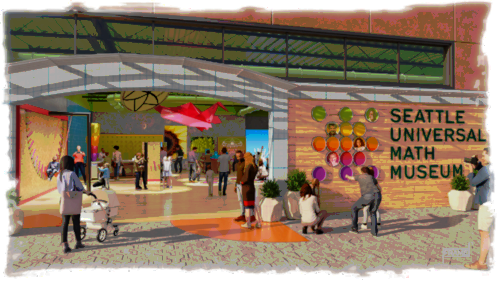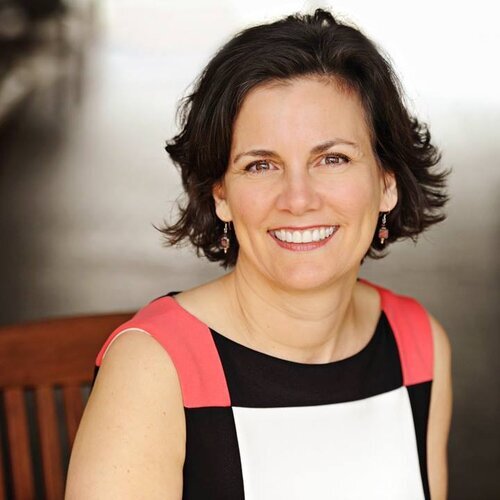
Imagine you’re at a museum entrance, a few years from now. Straight ahead are six doorways — six different ways to explore the museum. Music. Art. Technology. History. Science. Sports.
No matter what doorway you choose, there’s math on the other side.
Tracy Drinkwater, a long-time math educator with roots in the Seattle area, is working to make that museum a reality with the Seattle Universal Math Museum.
The 4-year-old nonprofit is built around the core notion that every person is a math person — but we all experience math in different ways. That’s where music, art, technology, history, science and sports come in. (Check that acronym, by the way.)
“Everyone identifies with at least one of those,” Drinkwater said. “And now they can see how much math there is in those. History is actually my favorite. It’s not only that you’re using math all the time with history, there’s also an amazing and rich history of math.”
The vision is for vibrant, interactive exhibits that bring math to life for students in ways that textbooks and worksheets don’t.
“It was never going to be calculators and abacuses and slide rules behind glass,” Drinkwater said.

Drinkwater’s experience as a math educator — a classroom educator, tutor and university lecturer — has informed her conviction that experiencing math should be about more than memorizing equations.
“I want it to be the opposite of those black-and-white 2D worksheets,” she said. “I want people to walk in to full-color math. It’s all around you.”
On a smaller scale, SUMM is already a reality. The museum exists as a nonprofit that offers math programs to schools and other community organizations on a sliding-scale payment system.
At some point in the near future, Drinkwater would like to add a SUMMobile — a mobile museum based out of a van that will visit schools and community centers — as well as a temporary exhibit space in the Seattle area.
After that, the goal is a permanent location in South Seattle or elsewhere in South King County, hopefully in the next three years.
“We want to be bigger, but we have to take it one step at a time,” Drinkwater said. “We want to be a model for others.”
Now, the 11-person organization is busy applying for grants and securing funding from donors. Revenue has more than doubled year-over-year, with a million dollars projected for the next year.
Drinkwater said Seattle is a perfect place to start a math museum; the tech industry is rich with mathematics-related jobs. But that appetite for math doesn’t necessarily translate to scores of funding offers for a math museum.
“What’s interesting is, compared to New York and the East Coast, the West Coast is more new money and less philanthropic,” Drinkwater said. “We have passionate donors and board members, but we haven’t cracked into the really wealthy environment of philanthropy.”
The National Museum of Mathematics in New York City — a major source of inspiration for SUMM — has a hefty roster of annual donors, including major philanthropic organizations, universities and wealthy philanthropists.
Funding from private sources is an important part of the SUMM’s financial plans, since the goal is to operate on what Drinkwater describes as a Robinhood model — charging for museum services in wealthier communities and providing free or reduced services in areas with lower test scores and more Title 1 schools.
Ultimately, the goal is to simultaneously serve students in need and break down generations of messaging and stigma around what it means to be “good” at math, Drinkwater said.
“I meet people and they always say ‘Oh that’s not for me, I’m not a math person,’” she said. “And I say, actually, it’s exactly for you.”

